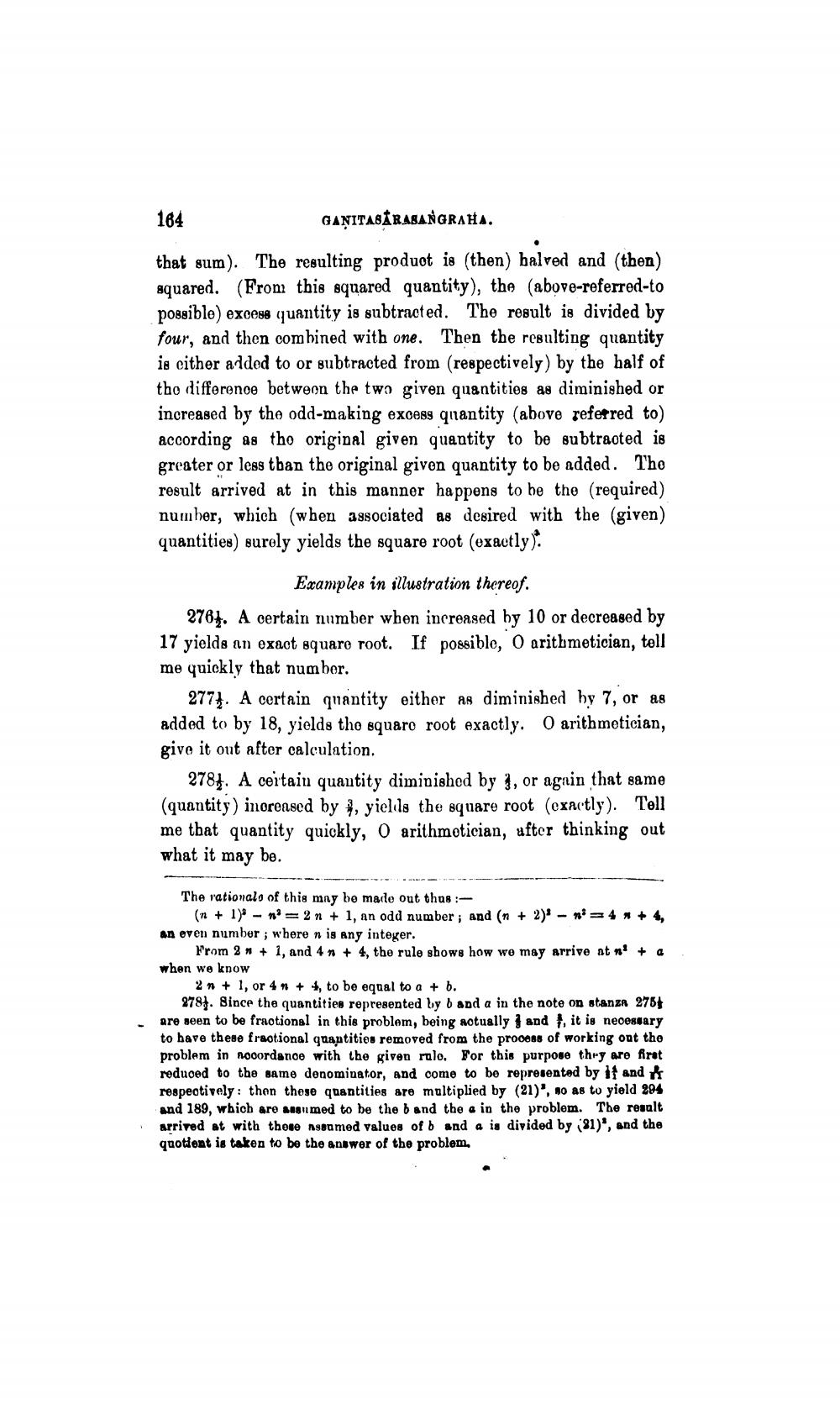________________
164
GANITASARASANGRAHA.
that sum). The resulting product is (then) halved and (then) squared. (From this squared quantity), the (above-referred-to possible) excess quantity is subtracted. The result is divided by four, and then combined with one. Then the resulting quantity is either added to or subtracted from (respectively) the half of the difference between the two given quantities as diminished or increased by the odd-making excess quantity (above referred to) according as the original given quantity to be subtracted is greater or less than the original given quantity to be added. The result arrived at in this manner happens to be the (required) number, which (when associated as desired with the (given) quantities) surely yields the square root (exactly).
Examples in illustration thereof.
276. A certain number when increased by 10 or decreased by 17 yields an exact square root. If possible, O arithmetician, tell me quickly that number.
277. A certain quantity either as diminished by 7, or as added to by 18, yields the square root exactly. O arithmetician, give it out after calculation.
2784. A certain quantity diminished by 3, or again that same (quantity) increased by 4, yields the square root (exactly). Tell me that quantity quickly, O arithmetician, after thinking out what it may be.
The rationals of this may be made out thus:
(n + 1) n3 2 n + 1, an odd number; and (n + 2)2 — n2 = 4 n + 4, an even number; where n is any integer.
From 2+1, and 4 n + 4, the rule shows how we may arrive at n2 + a when we know
2n+1, or 4n+4, to be equal to a + b.
278). Since the quantities represented by b and a in the note on stanza 275 are seen to be fractional in this problem, being actually and †, it is necessary to have these fractional quantities removed from the process of working out the problem in accordance with the given rule. For this purpose they are first reduced to the same denominator, and come to be represented by it and respectively then these quantities are multiplied by (21), so as to yield 294 and 189, which are assumed to be the b and the a in the problem. The result arrived at with these assumed values of b and a is divided by (81), and the quotient is taken to be the answer of the problem.




